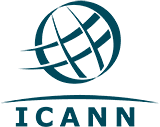How to Generate More Leads with Your Website
In today's digital world, having a website is not enough. To maximize the potential of your business, it's essential to implement strategies that help you generate leads. Below, we'll explore some effective tactics you can apply to your website to attract and convert visitors into leads. Conversion Strategies on Your Website Conversion is the process by which a visitor to your website becomes a potential customer. There are various strategies you can implement to optimize this conversion, and here are some of the most effective ones. How to Use Contact Forms and Live Chats Contact forms and live chats are essential tools to capture your visitors' attention and convert them into potential customers. Here's how to use them effectively: Place contact forms strategically: Make sure your contact forms are visible and accessible in different sections of your website. You can include them on the homepage, in the footer, or on specific service pages. The easier it is for a visitor to find the form, the more likely they are to fill it out. Simplify the form: A complicated form can deter visitors. Limit the number of fields to the essentials, such as name, email, and message. The simpler the process, the higher the conversion rate. Incentivize form completion: Offer something of value in exchange for the visitor's information. This could be a free eBook, a free initial consultation, or access to exclusive content. These types of incentives will motivate users to leave their details. Implement live chats: Live chats offer an immediate form of communication. Make sure you have an agent available to answer questions in real time. This not only improves the user experience, but also allows you to capture leads while their queries are being resolved. Optimize for mobile devices: An increasing number of users are accessing websites from their mobile devices. Make sure your forms and live chats are optimized for mobile, which will make it easier to interact from any device. Follow up on leads: Once a visitor fills out the form or interacts via chat, it's crucial to follow up. Send an email thanking them for their interest and offering more information about your services. Not only does this show professionalism, but it can also convert a lead into a customer. Implementing these strategies will not only improve your users' experience, but it will also increase your chances of generating qualified leads. Remember that every interaction counts and can be the key to converting a visitor into a loyal customer. If you want to go even deeper into lead generation and website optimization, don't hesitate to download our lead capture template! With it, you'll be able to structure and improve your strategies to attract more potential customers to your business. With these tactics, you'll be on the right path to transforming your website into a powerful lead generation tool. Get started today and watch your business grow!
Read More






